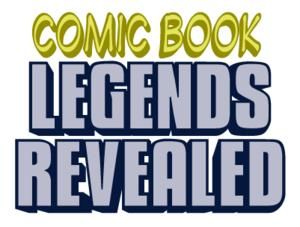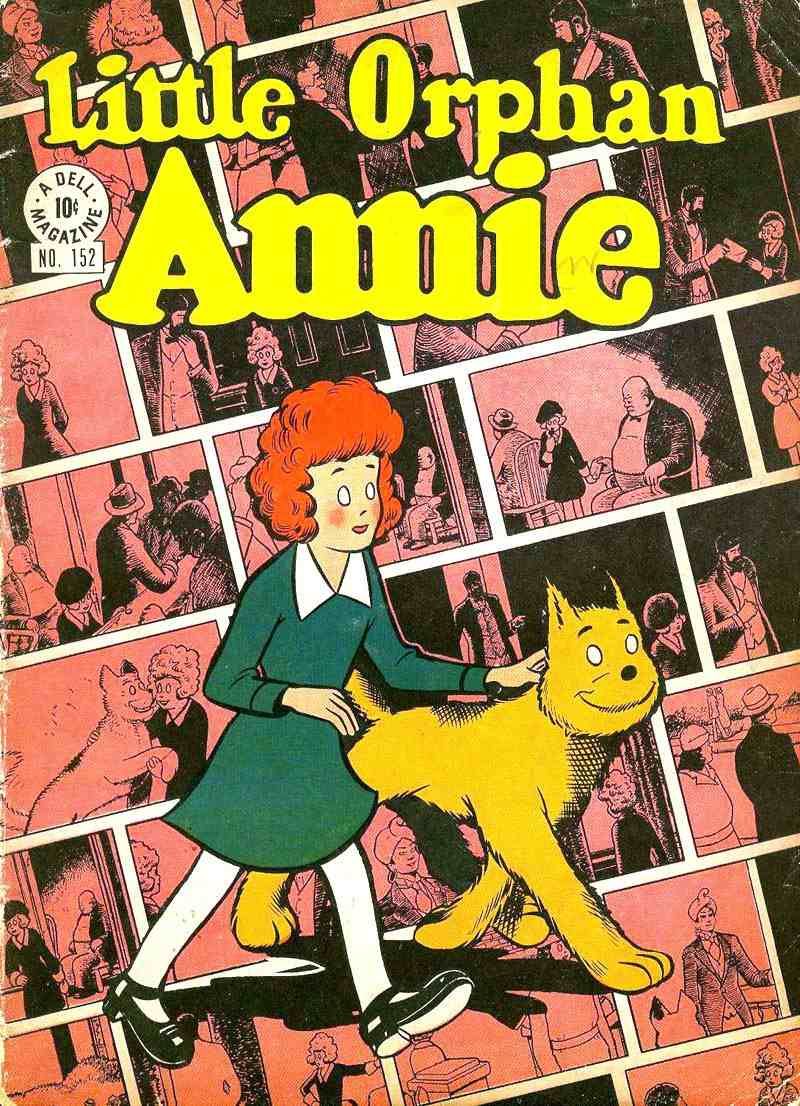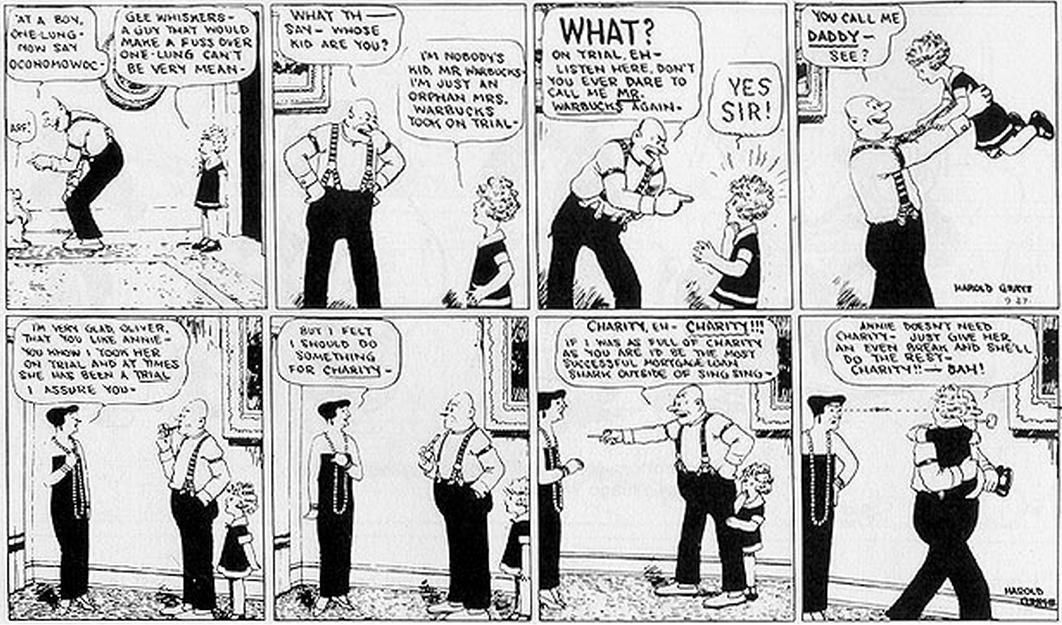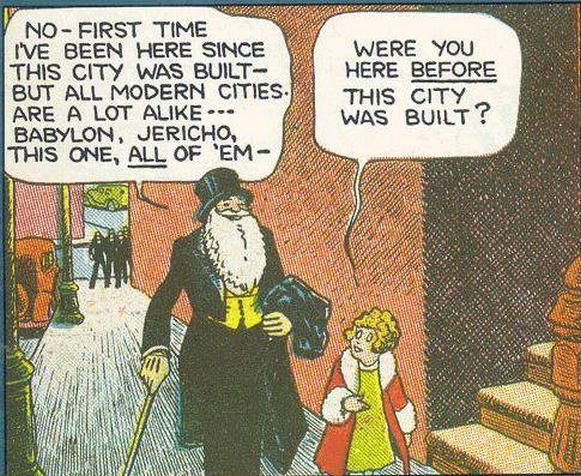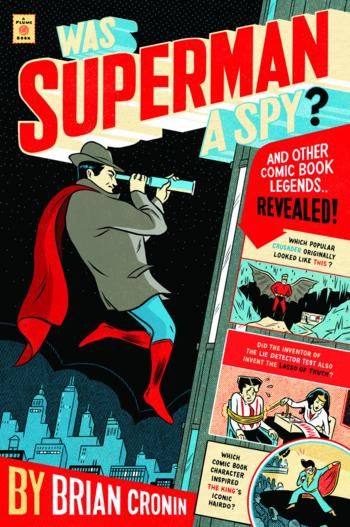Welcome to the three hundredth and thirty-first in a series of examinations of comic book legends and whether they are true or false. This week, shockingly enough, it is a LITTLE ORPHAN ANNIE theme week! Did I just blow your mind? Good! This week, be shocked at the truth about whether Annie creator Harold Gray actually had Daddy Warbucks kill himself rather than suffer through a fourth term of Franklin Delano Roosevelt (the truth of this one is quite twisted), learn why you don't want to try to ration Harold Gray's gas and discover just who Little Orphan OTTO was.
Click here for an archive of the previous three hundred and thirty.
Let's begin!
COMIC LEGEND: Harold Gray originally pitched the strip as starring an orphan named Otto.
STATUS: True
Newspaper publisher and editor Joseph Medill Patterson was particularly involved in the comic strips that he featured in his newspapers (first the Chicago Tribune, which was founded by his grandfather and later, the New York Daily News, founded by, well, him). Through his diligence, he built the Chicago Tribune Syndicate into one of the most powerful comic strip syndicates around (it still is, just under its current name of Tribune Media Services). He either helped create or helped develop some of the greatest comic strips of all-time, including Gasoline Alley, Dick Tracy and Terry and the Pirates. One of his biggest early hits was The Gumps, which cartoonist Sidney Smith developed from a Patterson idea. The Gumps, a domestic comedy about "ordinary" people, was a national smash (in 1922, Smith signed a ten-year, $1 million dollar contract!) and when Patterson founded the Daily News in 1919, The Gumps was the only Chicago Tribune strip that he brought over to the new paper (at first).
Smith had an assistant on the strip named Harold Gray. Gray, naturally, wanted to have his own strip (as, well, who wouldn't?) and he would develop a number of ideas and go over them with Smith. Smith, to his credit, was quite helpful to his assistant in the development of Gray's ideas. Whenever Gray would come up with an idea that Smith liked, Gray would pitch it to Patterson. For months, Patterson shot down all of his ideas. Finally, in 1924, Gray pitched him on the notion of a strip about a young orphan boy named Otto who pulled himself up by his own bootstraps and went on a number of adventures. Patterson liked the novelty of an orphan lead, so he told Gray to work up a sample, but to make sure that it was a cute looking kid so that the strip would appeal to women readers (similar advice from Patterson to Gasoline Alley creator Frank King in 1921 led to the introduction of abandoned baby Skeezix, who was adopted by the single male lead of the strip, Walt Wallet. It turned a strip about cars that was clearly geared towards men into a cross-market hit). Once Gray delivered his drawings of young Otto (at this point, Gray apparently began to refer to him specifically as "Little Orphan Otto), complete with cute curls, Patterson opined, "The kid looks like a pansy to me. Put a skirt on him and we'll call it 'Little Orphan Annie'" (Patterson almost surely was also considering that there were many more strips about young boys than there were strips about young girls, making Little Orphan ANNIE stand out a bit).
And the rest, as they say, is history...
Here's one of the earliest strips, where young Annie is adopted (as a publicity stunt) by the wife of Oliver Warbucks. Warbucks takes to Annie quickly (click on the strip to enlarge - that goes for all the strips in this piece, they can be enlarged by clicking on them)...
Mrs. Warbucks was soon written out of the strip.
The name, "Little Orphan Annie" (and heck, Little Orphan Otto, as well) is a reference to James Whitcomb Riley's popular 19th Century poem, Little Orphant Annie.
Here's a snippet from Riley's poem:
INSCRIBED WITH ALL FAITH AND AFFECTION
To all the little children: -- The happy ones; and sad ones;
The sober and the silent ones; the boisterous and glad ones;
The good ones -- Yes, the good ones, too; and all the lovely bad ones.
LITTLE Orphant Annie's come to our house to stay,
An' wash the cups an' saucers up, an' brush the crumbs away,
An' shoo the chickens off the porch, an' dust the hearth, an' sweep,
An' make the fire, an' bake the bread, an' earn her board-an'-keep;
An' all us other childern, when the supper-things is done,
We set around the kitchen fire an' has the mostest fun
A-list'nin' to the witch-tales 'at Annie tells about,
An' the Gobble-uns 'at gits you
Ef you
Don't
Watch
Out!
Thanks to Robert C. Harvey's The art of the funnies: an aesthetic history for the Patterson quote!
COMIC LEGEND: Gray used his strip to specifically harass the clerk who turned him down for an increase in his gas rations during World War II.
STATUS: Bizarrely True
One of the main tenets of Gray's strip was the idea of self-reliance. Therefore, while many have written about how Gray would use his strip to express his political views (he was quite conservative and libertarian), it is worth noting that his political philosophies were integral to the very set-up of the strip, so it was not like it was not unnatural.
That said, while it was natural for his general views to make their way into the strip, Gray certainly took it to great extremes at time.
First off, it is important to note that Gray did extensive traveling across the United States researching story ideas for Little Orphan Annie. You see, the main structure of the strip was that Annie and Daddy Warbucks would be separated by some reason (various reasons over the years) and Annie would end up traveling to various spots of the country and having adventures (often they involved her jump-starting the economy of a small town just by her "get up and go" attitude) and then the pair would reunite (only to be separated again soon after).
Gray felt that this travel was integral to the strip (in fact, speaking of the first legend, years after the fact, Gray tried to give his own origin of how he came up with Little Orphan Annie, and it involved him talking to a young orphan girl - it is a dubious story at best). Well, during World War II, gas was rationed. Gray was already no fan of the federal government (as he viewed Franklin Delano Roosevelt as the enemy to basically all of his ideals of self-reliance for the American people), but when he requested and was denied extra gas ration coupons to effect his travel, he was furious. It was an Office of Price Administration clerk named Flack who turned Gray down, determining that Gray's cartoons were not vital to the war effort.
Gray, a great supporter of the war (Annie formed a group called the Junior Commandos to help the rationing effort in the United States and it soon grew from the strip into a reality) and he was outraged that what he felt were his great patriotic efforts were being unrecognized. Gray asked for a hearing and he received one, but Flack's decision stood.
Gray then took to his strip by starting a series of strips where he would berate a "fictional" character named "Fred Flask."
Editorials piled in denouncing Gray and a couple of papers even dropped the strip. Flack threatened to sue over libel. Gray never apologized, but he did drop the series of strips.
COMIC LEGEND: Gray had Daddy Warbucks kill himself rather than to live through another Presidential term of Franklin Delano Roosevelt.
STATUS: False (but really, really close to True)
While he gave up on Flack, he never forgave Roosevelt.
My buddy Jeff Ryan has a new book out about the history of Nintendo. It is called Super Mario: How Nintendo Conquered America
. You ought to buy it!
With that plug done, let me note that Jeff asked me the other day if the following legend was true:
Harold Gray, Little Orphan Annie creator and quite the conservative, had Daddy Warbucks kill himself rather than live in FDR's America. He resurrected Warbucks only after FDR croaks...so does that mean he's a zombie now?
Not quite, Jeff! But bizarrely very, very, very close to the truth!
In a series of strips in 1944, upon Roosevelt receiving the nomination for his historic FOURTH term as President, Gray began a series of strips where Warbucks was slowly dying of a mysterious disease. The disease, clearly, was that of the country itself. The current generation was killing the hero of capitalism, Warbucks...
Gray dragged the death out for some time, with many strips similar to the above.
However, as you all know, Roosevelt died early in 1945. Well, what do you know, Warbucks turned out to have faked his death!!
And then, Gray went even further by explaining how happy Warbucks was about a certain change in the "climate."
How twisted is that?
As an aside, though, Jeff, amusingly enough, Daddy Warbucks actually WAS killed earlier in the strip and brought back to life! You see, during the 1930s, Gray began to become interested in mysticism and worked a bunch of stories involving magic into the strip. In 1935 and 1937, Warbucks acquired two assistants named Punjab and The Asp (1935 for Punjab and 1937 for The Asp). Both had mystical powers and came from India and "the Orient," respectively. In 1937, Gray also introduced the powerful magical being Mr. Am. Here is Am with Annie...
In a 1937 series of strips, Warbucks and the Asp are killed by bad guys, but Mr. Am brings them back to life! So yes, I guess Warbucks was already a bit of a zombie before that darned FDR killed him!
Thanks to Jeff for the question and thanks to Stuart Liss and his brilliant Little Orphan Annie website for the strip scans throughout the piece!
Okay, that's it for this week!
Thanks to the Grand Comics Database for this week's covers! And thanks to Brandon Hanvey for the Comic Book Legends Revealed logo!
Feel free (heck, I implore you!) to write in with your suggestions for future installments! My e-mail address is cronb01@aol.com. And my Twitter feed is http://twitter.com/brian_cronin, so you can ask me legends there, as well!
Follow Comics Should Be Good on Twitter and on Facebook (also, feel free to share Comic Book Legends Revealed on our Facebook page!). If we hit 3,000 likes on Facebook you'll get a bonus edition of Comic Book Legends the week after we hit 3,000 likes! So go like us on Facebook to get that extra Comic Book Legends Revealed! Not only will you get updates when new blog posts show up on both Twitter and Facebook, but you'll get original content from me, as well!
Also, be sure to check out my website, Legends Revealed, where I look into legends about the worlds of entertainment and sports, which you can find here, at legendsrevealed.com.
Here's my book of Comic Book Legends (130 legends - half of them are re-worked classic legends I've featured on the blog and half of them are legends never published on the blog!).
The cover is by artist Mickey Duzyj. He did a great job on it...(click to enlarge)...
If you'd like to order it, you can use the following code if you'd like to send me a bit of a referral fee...
Was Superman a Spy?: And Other Comic Book Legends Revealed
See you all next week!

